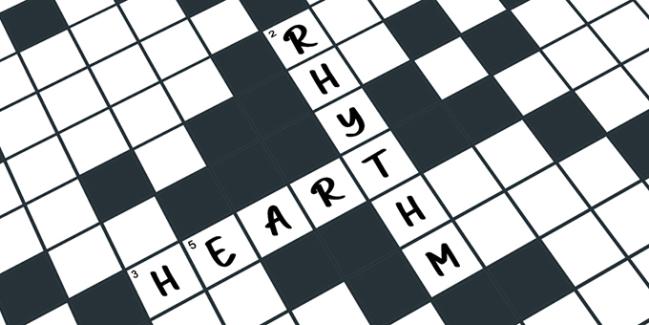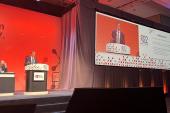Top Heart Rhythm News of 2022
There were continuing innovations in pacing, a long-awaited guideline update, new drug therapy options, and CMS cuts.

In 2022, the field of heart rhythms saw new research into innovative pacing technologies, a long-awaited guideline update, and new drug therapy options emerging for patients with arrhythmias.
In the spring, attendees of Heart Rhythm 2022 heard presentations on advancements in pacing technology, starting with the results of the ATLAS S-ICD trial. In that study, use of a subcutaneous implantable cardioverter-defibrillator (subqICD; 48 Across) lowered the risk of major lead-related complications by a relative 92% compared with a transvenous system, without a significant difference in device performance.
“Subcutaneous devices are and will be the way of the future. There’s no question about that,” Jodie Hurwitz, MD (North Texas Heart Center, Dallas), president-elect of the Heart Rhythm Society, said while discussing the top news of the year with TCTMD.
She highlighted, too, all of the research released at the meeting and elsewhere on conduction-system pacing—including both His-bundle (His; 37 Down) and left bundle branch (LBB, 63 Down) pacing—as an alternative to cardiac resynchronization therapy with biventricular pacing. Though there’s still a lack of definitive randomized evidence supporting these modalities, initial studies are promising.
Another major development during 2022 was the release of the latest iteration of guidance on ventricular arrhythmias and sudden cardiac death from the European Society of Cardiology (VASCDguideline; 12 Down), a document that emphasizes the public’s role in responding to out-of-hospital cardiac arrest, updates ICD indications, and provides modified recommendations for use of catheter ablation.
And in the realm of drug therapies for patients with arrhythmias, the US Food and Drug Administration cleared changes to the label of the Watchman FLX left atrial appendage closure device (Boston Scientific) that would allow for dual antiplatelet therapy (DAPT; 22 Across) as an accepted antithrombotic regimen after the procedure. Previously, based on what was used in the pivotal trials, the recommended regimen was 45 days of oral anticoagulation plus aspirin.
Patients with paroxysmal supraventricular tachycardia may have another option coming. Attendees of the American Heart Association 2022 Scientific Sessions heard the full results of the RAPID trial showing that etripamil (19 Down) nasal spray, which is self-administered, is safe and effective and may reduce the need for emergency visits and medical interventions.
What Else?
Did we miss anything important regarding heart rhythms in our Crossword Challenge? Among the major developments this year, Hurwitz pointed to multiple areas relating to the treatment of atrial fibrillation (AF).
New data have continued to come out of the EAST-AFNET 4 trial supporting early initiation of rhythm-control therapy in patients with recently diagnosed AF. “The idea is that we’ve got to treat atrial fibrillation and get folks back to sinus rhythm,” Hurwitz said. “That’s really what everybody should be pushing for, and we’re going to continue to see information on this.”
Moreover, innovations are continuing in the area of catheter ablation for AF, with the emergence of pulsed-field ablation, which affects the cell walls differently than do radiofrequency ablation or cryoablation. “The selling point right now is that it really only affects the immediate tissue around where it’s delivered so that the potential damage to other vasculature . . . should be minimal,” Hurwitz said.
That modality also offers the potential for shorter procedures, an idea that intersects with another important development in 2022—cuts to reimbursement for various procedures, including ablations, from the US Centers for Medicare & Medicaid Services (CMS).
Although CMS may think that shorter procedures are easier—with the implication that reimbursement doesn’t need to be as high—that’s not necessarily the case, Hurwitz said. “When we talk about decreasing the time for some of these procedures, we’re doing that by increasing the complexity of them,” she said. “It’s really learning about what we’re looking at in a better way so that we can do things in a safer, quicker manner, but that takes a lot of information in front of us that we have to continuously watch while we’re doing that.”
A consequence of cutting reimbursement could be reduced access to the procedures for patients who need them, Hurwitz said.
“If you decrease reimbursement, you decrease physicians’ ability to hire staff to help them get these patients into the office, get them set up for the ablation procedures, and to hire the people who need to be in the lab for follow-up,” she said, adding that the changes could also discourage cardiologists from going into electrophysiology.
Looking ahead, Hurwitz predicted that while His-bundle pacing started gaining some traction several years ago, interest has started to shift toward LBB pacing because implantation of the leads is less challenging. Also, Hurwitz noted, threshold demands seem to increase over time with His-bundle pacing, but not with LBB pacing.
“I think we will move away from His-bundle pacing and that it will be left bundle branch area pacing that people will be really looking at in the future and doing,” she said.
Todd Neale is the Associate News Editor for TCTMD and a Senior Medical Journalist. He got his start in journalism at …
Read Full Bio




Comments